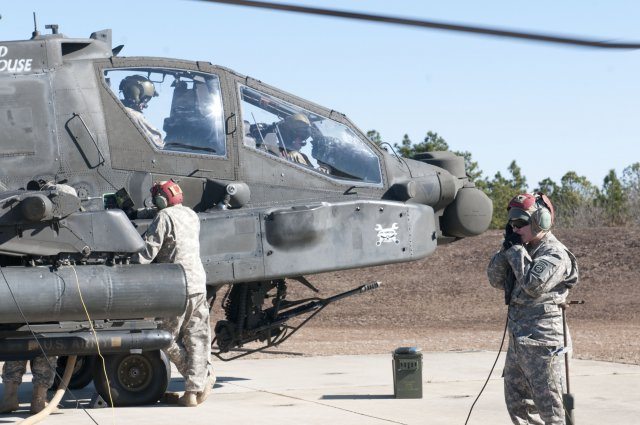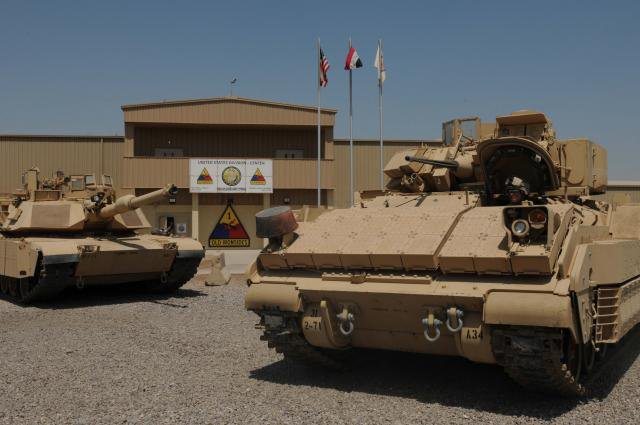Operation Desert Storm saw the first female aviator in battle when Maj. Marie T. Rossi took the driver’s seat flying fuel and ammunition to the Soldiers crossing into enemy territory. Rossi lost her life when her CH-47 Chinook helicopter went down on March 1, 1991.
Her headstone reads, “The first female commander to fly into battle.” She certainly was not the last.
Today, women of the 82nd Combat Aviation Brigade, or CAB, continue changing the face of the battlefield by joining the fight as combat aviators, crew chiefs, and helicopter mechanics, showcasing their skills and leadership abilities.
Lt. Col. Gail E. Atkins, commander, 122nd Aviation Support Battalion, 82nd CAB, is no stranger to the changing role of women in combat aviation. The Westchester, Pa., native has served for almost 18 years as a UH-60 Black Hawk helicopter pilot.
“We are seeing an evolution with regard to women in combat roles, in how our skills have evolved and how we are exploiting those skills,” Atkins said. “In aviation, we went through this back in 93,’ when the military opened up attack aviation to women, so we are 15 years ahead of the curve in aviation compared to where our other branches are.”
Throughout her career, Atkins has seen an increase in number of women who serve alongside her.
“I have an all female staff right now and it’s just the way it has worked out. But I think it is indicative of the number of women who are joining the service,” Atkins said.
Other women have seen changes in their career fields since joining the Army, including Chief Warrant Officer 2 Laura G. Dye, a UH-60M Black Hawk pilot, 2nd Aviation Assault Battalion, 82nd CAB. She began her career eight years ago as an enlisted field artillery Soldier.
“I always knew I wanted to join the Army but I never had aspirations to be a pilot or work in aviation,” Dye said. “So, when I joined shortly after 9/11, I came in as a field artillery specialist and was the only female in my class.”
The Wichita, Kan., native has a degree in computer drafting and design and said that field artillery went along with her degree and was of great interest to her. However, when she realized she was not performing the job she was trained for as a field artillery specialist, she started looking at other options.
“When I was getting ready to re-enlist, my re-enlistment noncommissioned officer asked me if I ever thought about being a pilot, and I said ‘no, but I was open to change,'” Dye said. “I took her recommendation and put my (flight) packet in and was accepted; I love it and am glad I did it.”
Since her change in career, Dye said she sees more females joining the ranks within combat aviation and doing what they love.
Sgt. Jessica Day, a 122nd ASB Kiowa helicopter armament noncommissioned officer, joined the Army in 2005 with aspirations of becoming a pilot but said she wasn’t sure what type of aircraft she wanted to fly. She chose to become a helicopter mechanic so she could learn more about the different types of aircraft.
“I always knew from a young age that I wanted to fly helicopters,” Day said. “I chose to work on them so I could see what I wanted to fly.”
Day said she has seen a change in the faces of her unit even in the short time she has been in the Army.
“When I first joined, I was the only female in my shop,” Day said. “Today, there are several females within this unit alone, who are working on the various helicopters.”
Although aviation was one of the first combat jobs to allow women into the field, there are a few women who can remember a time when it was not an option to them as a choice for their military careers.
First Sgt. Desiree T. Lipscomb, 122nd ASB, Company B, first sergeant, has served in the Army for more than 20 years. Hailing from Panama, her career has taken her through many different experiences in the military from drill sergeant to crew chief to her current position.
“When I first came in the Army I was a wire systems installer because jobs within aviation were not open for women at that time,” Lipscomb said. “I wanted to be a Black Hawk mechanic and was able to change my job as soon as it opened up a few years later.”
Lipscomb recalls the changes and challenges she faced moving into her role as an aviator.
“I was leaving for drill sergeant school when the first female Apache pilots were coming here to Fort Bragg and I can remember that it caused an uproar because it was considered a ‘boys club,'” said Lipscomb. “But the female pilots that came in to fly those helicopters, represented their field well and contributed to the overall success of combat aviation.”
Lipscomb said that people tend to be afraid of change, but once they see positive actions within the changes that are taking place, people are more accepting.
For these aviators, this positive outlook seems to be a key to their success, in the air and in the hangar.
“If you come in with a good attitude and do your job, everyone will accept you and see that you can handle any task handed to you. Remember, the military is always changing and what you do today may not be what you do tomorrow,” said Atkins.











